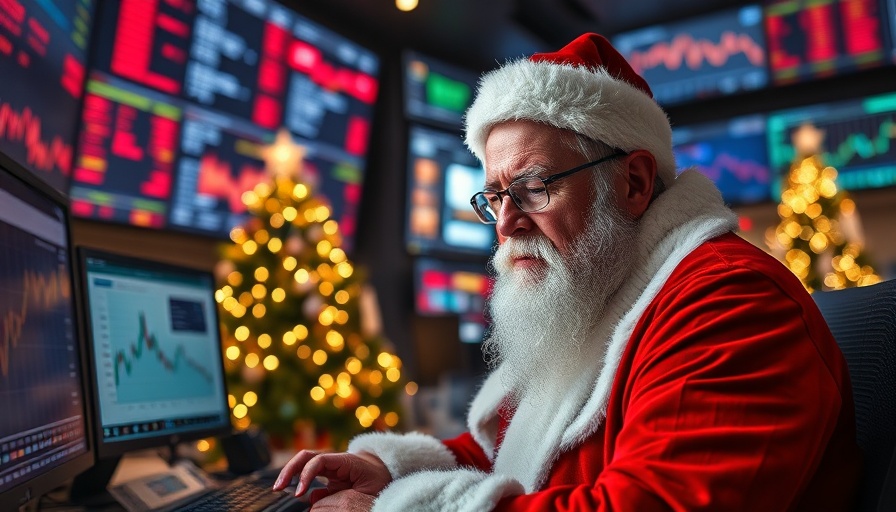
The Santa Claus Rally: What It Means for Your Investments
As the holiday season approaches, many investors begin to turn their gaze toward a phenomenon known as the Santa Claus Rally. This well-recognized trend refers to the pattern of stock prices tending to rise during the last week of December and the first two trading days of January. With historical data showing that the S&P 500 increases about 75% of the time during this seven-day period, the Santa Claus Rally captures the attention of both novice and seasoned investors.
Understanding the Santa Claus Rally
The term “Santa Claus Rally” was popularized by Yale Hirsch in the 1970s, and it encompasses a participant's shared anticipation at the close of the calendar year. This spike in stock prices has shown an average increase of 1.3%, leading many to wonder what factors contribute to this holiday cheer in the market.
Why Does This Rally Occur?
The reasons behind the Santa Claus Rally remain the subject of debate among financial experts. However, there are several key theories that help explain this phenomenon:
- Holiday Optimism: The uplifting spirit of the season often translates into consumer spending and a general positive outlook, which can elevate investor sentiment and push stock prices higher.
- Tax Considerations: As the year comes to a close, investors often engage in tax-loss harvesting, selling off underperforming stocks to offset gains for tax purposes. The subsequent reinvestment of those proceeds can lead to upward pricing pressure on stocks.
- Portfolio Rebalancing: Many fund managers undertake portfolio rebalancing at year-end, which can spur increased market activity and contribute to stock price gains.
- Low Trading Volume: With many institutional investors on holiday, the lower trading volume could lessen market resistance against upward movements, allowing prices to rise more easily.
- Speculative Buying: Anticipation of a positive new year can lead to early buying activities as investors position themselves for potential gains.
Historical Insights of the Santa Claus Rally
Looking back at historical performance, the consistency of the Santa Claus Rally is striking. Since the 1950s, the S&P 500 has generally increased during this period nearly three out of four years. Interestingly, years that do not witness a Santa Claus Rally may see weaker market performance in the following months, sparking concerns that the absence of such an uplift could signal rough waters ahead.
Making the Most of the Santa Claus Rally
For investors eager to leverage the Santa Claus Rally, several strategies can help:
- Short-Term Trading: Engaging in short-term trades during the rally can profit from anticipated increases in stock prices.
- Observation and Timing: Monitoring the market closely can provide insight into optimal buying or selling times during this festive period.
- Diversification: Broaden your investments to capitalize on various sectors that typically perform well during this time, such as retail and consumer goods.
The Broader Impact of Seasonal Trends
Understanding seasonal trends like the Santa Claus Rally can empower investors to make informed decisions. As financial literacy increases among individuals, recognizing these patterns is critical in navigating their investment journeys. As we delve deeper into the intricacies of the market, it becomes evident that being aware of these phenomena not only reads like a good financial guide but also resonates with human experience.
In conclusion, as the holiday season approaches, keep an eye out for the patterns of the Santa Claus Rally. Whether you’re a new investor or a seasoned veteran, there’s always a chance to take advantage of seasonal trends for potential gain. Celebrate the holiday spirit with a strategic approach to your investments, and let optimism fuel your journey into the new year.
 Add Row
Add Row  Add
Add 




 Add Row
Add Row  Add
Add 








Write A Comment